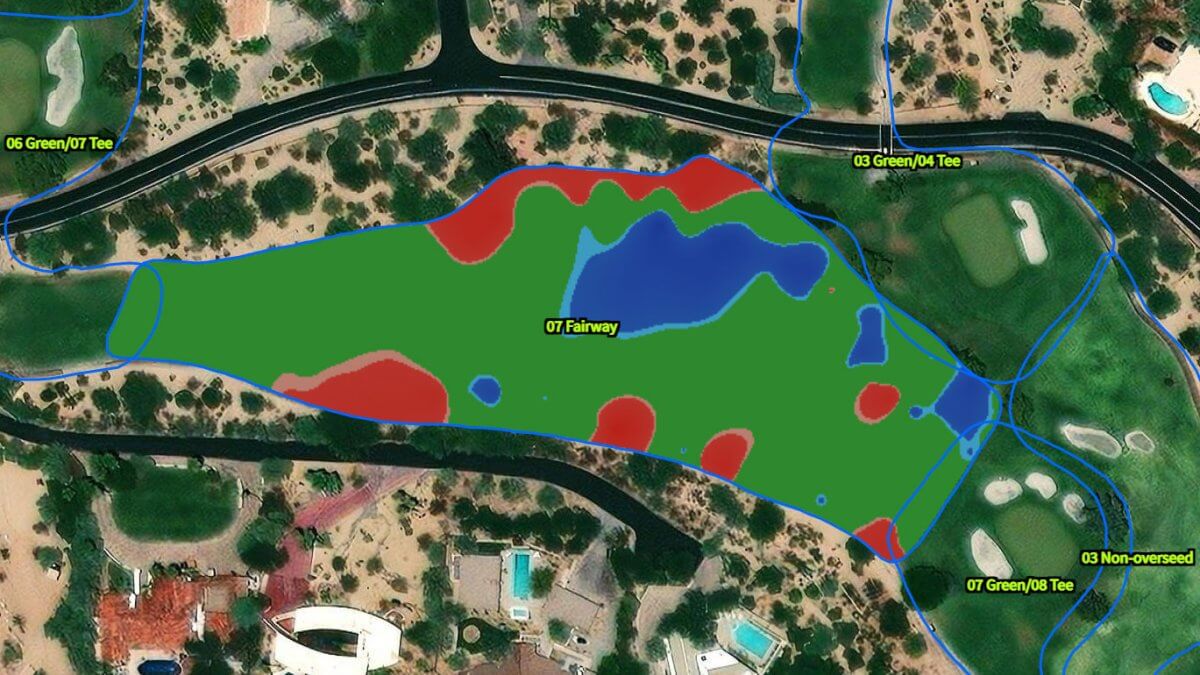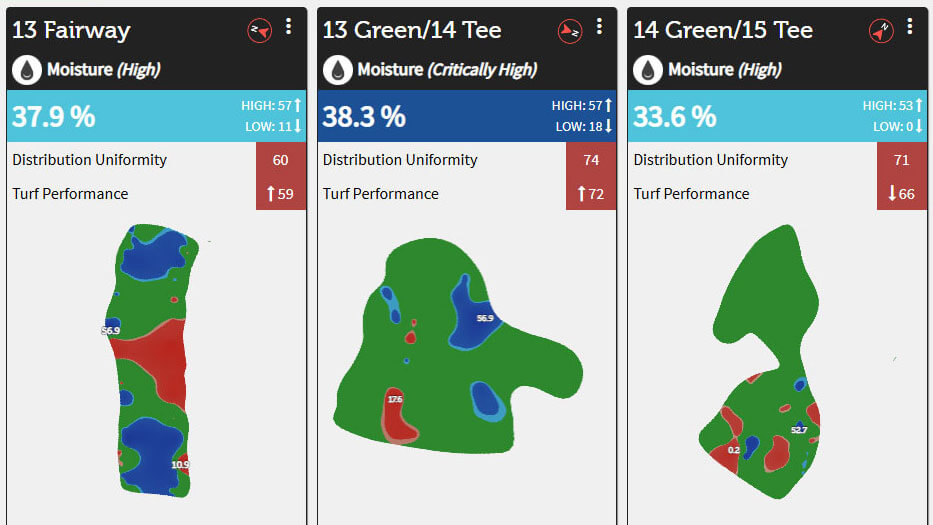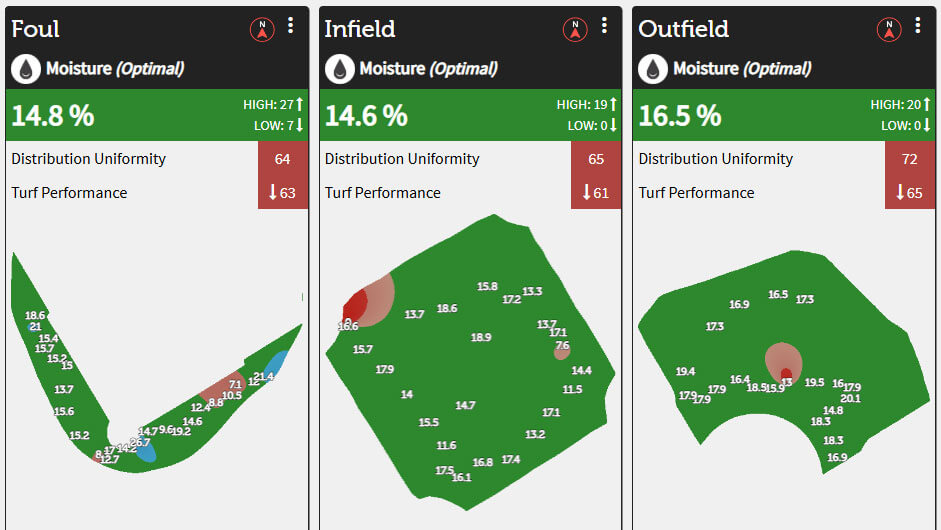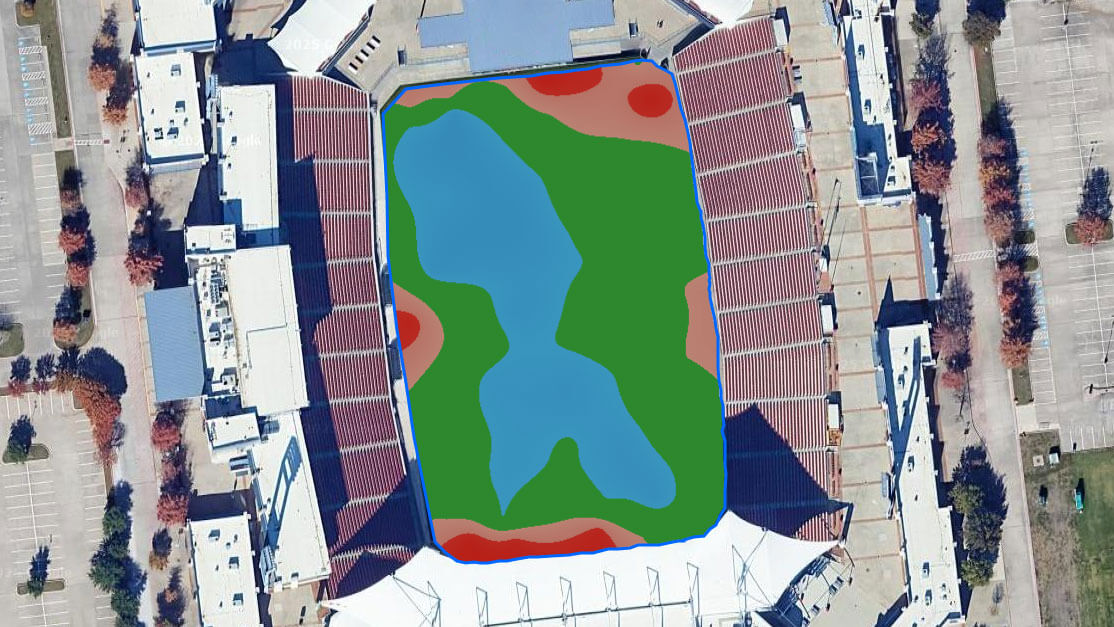
Precision Irrigation: Why Soil Moisture Mapping Matters for Golf Courses and Sport Fields
Maintaining lush, playable fairways while conserving water is a balancing act for golf course superintendents. Traditionally, irrigation decisions have relied on intuition and adjusting sprinkler run-times based on perceived dryness. However, this approach often leads to overwatering in some areas and underwatering in others. Enter soil moisture mapping: a data-driven strategy that’s transforming turf management through precision irrigation.
Soil moisture plays a pivotal role in hydrological, biological, and chemical processes, acting as a key regulator of surface-atmosphere interactions (Mittelbach et al., 2012; Zhuo et al., 2015). Its spatial and temporal variability influences everything from climate prediction to ecosystem health and water resource management (Betts, 1999; Dobriyal et al., 2012; Mo et al., 2012; Rhymer et al., 2010). POGO TurfPro’s soil moisture distribution uniformity score is a very useful indicator as research shows that “irrigation distribution uniformity is not necessarily a good indicator of moisture needs, or availability from the turf’s perspective,” (Kowalewski, 2020). For golf courses, understanding this variability is essential not just for turf quality, but for sustainability.

By mapping soil moisture across fairways, superintendents can identify zones with differing water needs. Using tools like the POGO Pro+ soil moisture meter, paired with its GPS and mapping software features, courses can classify irrigation heads into “dry” and “wet” zones. Instead of watering an entire fairway uniformly, irrigation programs can be tailored: dry zones receive more frequent watering, while wet zones get less. This site-specific irrigation reduces water waste and promotes healthier turf, not just on courses but with any sports field including football, soccer, and even baseball.

The University of Minnesota, in collaboration with the Minnesota Golf Course Superintendents Association (MGCSA), has developed a practical protocol to help courses implement this strategy. The step-by-step guide enables staff, interns, or even local high school golfers to collect georeferenced soil moisture data and create actionable maps. Completing an 18-hole course takes just 2–3 days, making it a feasible project for most facilities (Straw, 2019).
Beyond water savings, soil moisture mapping supports better playability, reduces disease risk, and aligns with environmental stewardship goals. As climate variability increases and water resources become more strained, adopting precision irrigation isn’t just smart, it is essential.

For golf courses and sport fields aiming to elevate their turf management while conserving resources, soil moisture mapping offers a clear path forward. It’s time to move beyond guesswork and embrace the power of data.
Kevin Neal, CGCS
Regional POGO Sports Turf Business Development Director
Office: 503-445-8000
Email: kneal@stevenswater.com
Sources:
Mittelbach et al., 2012; Zhuo et al., 2015; Betts, 1999; Dobriyal et al., 2012; Mo et al., 2012; Rhymer et al., 2010
Straw, C. (2019). Soil Moisture Meter Protocol Created in Partnership with UMN